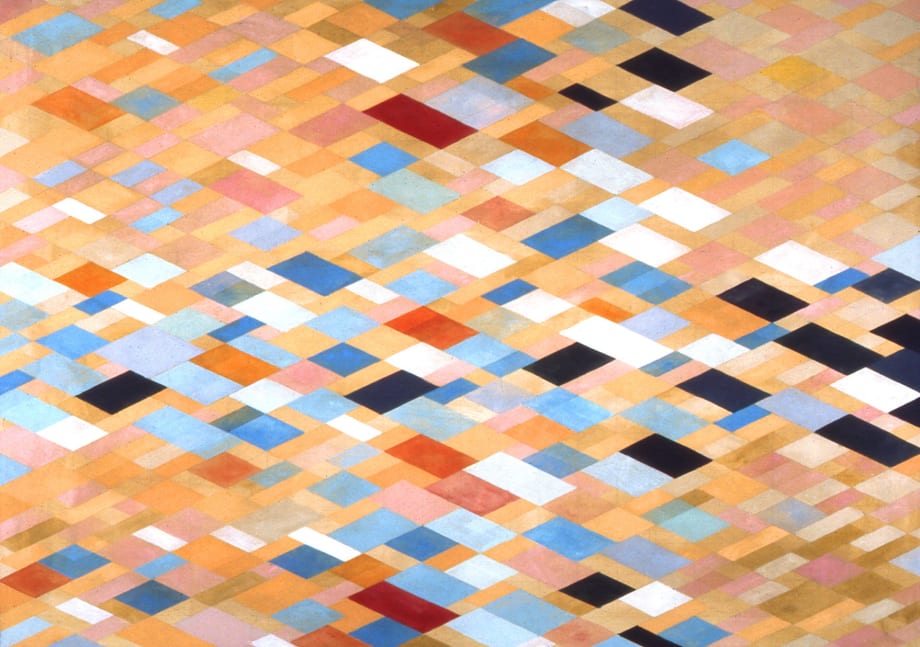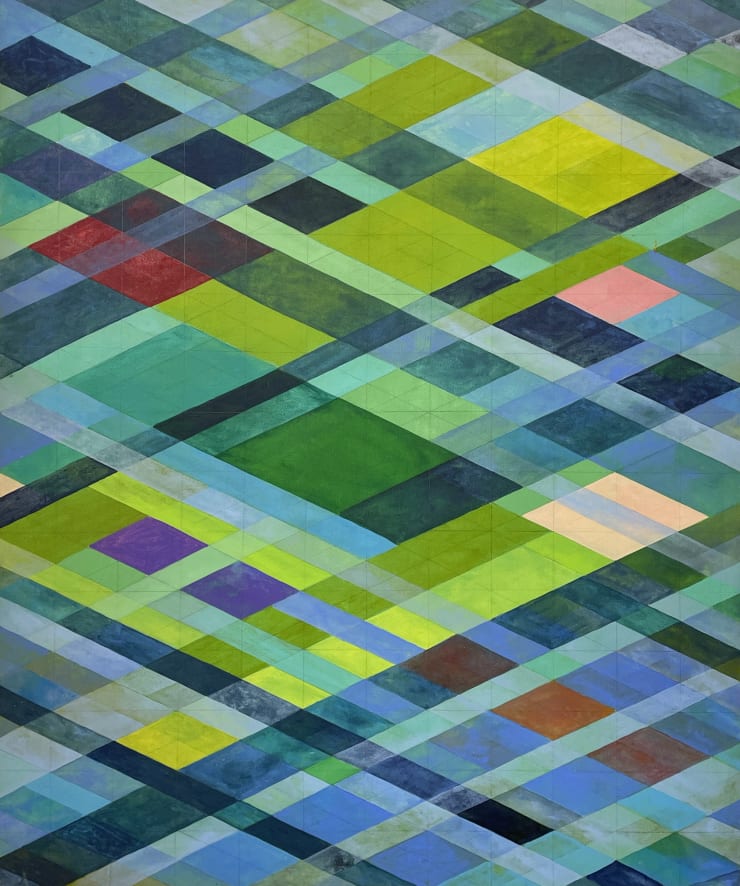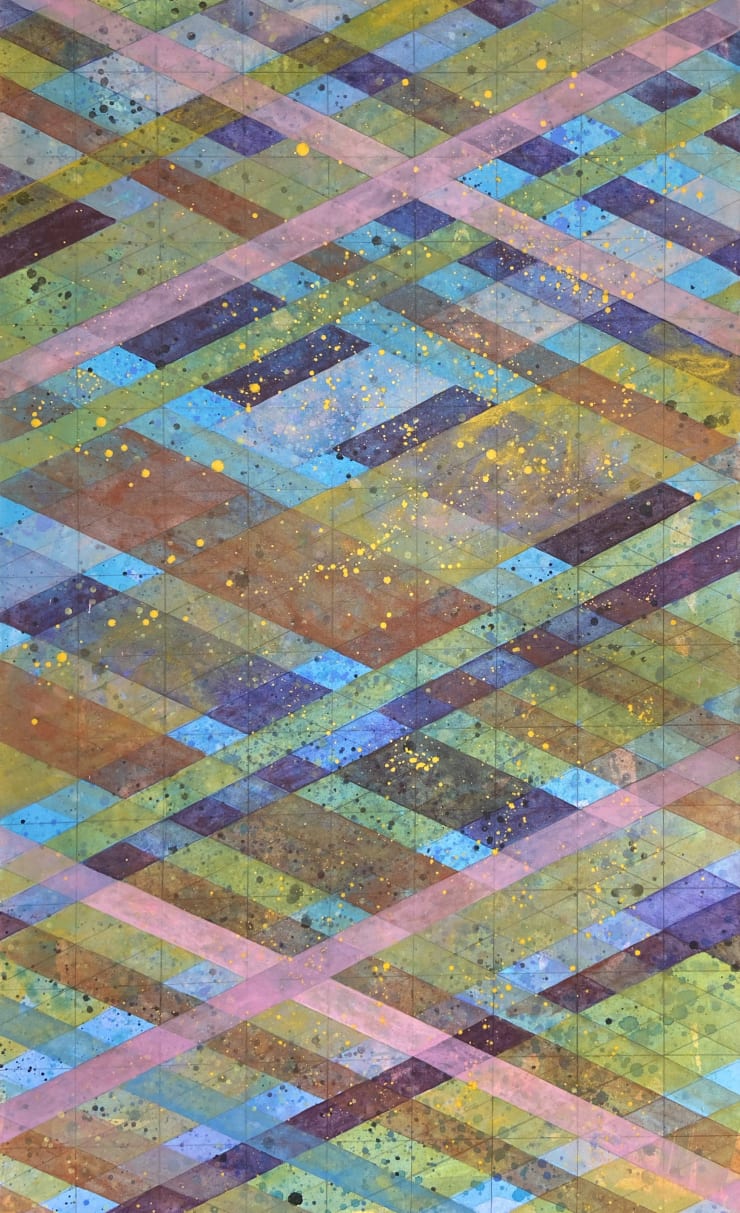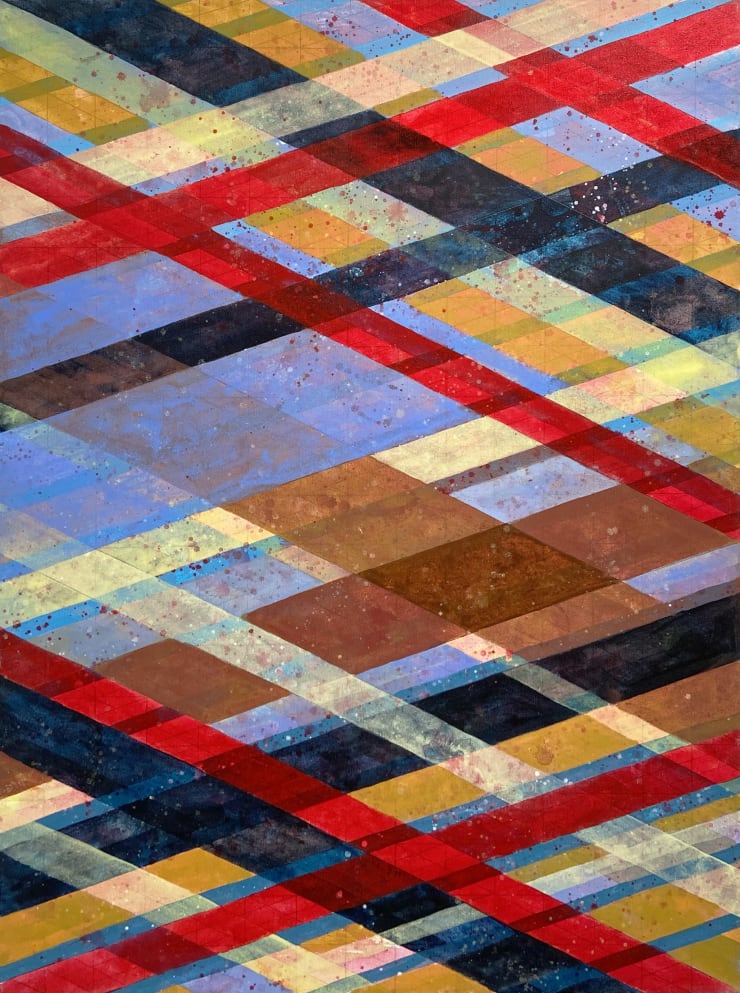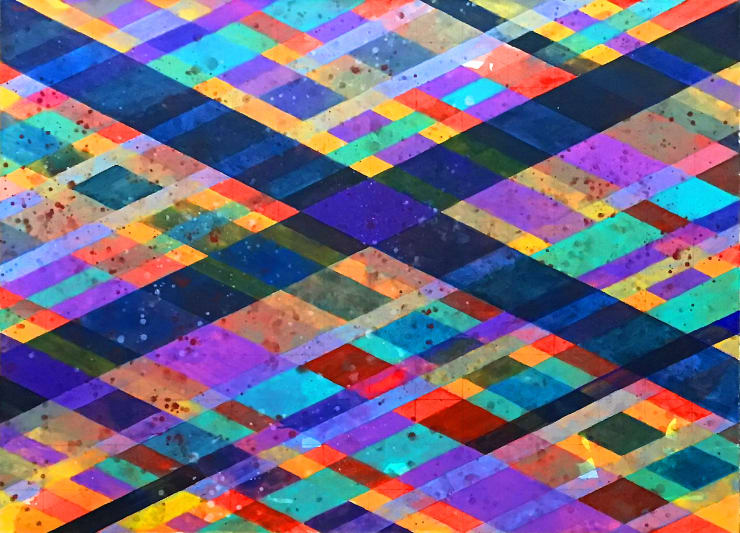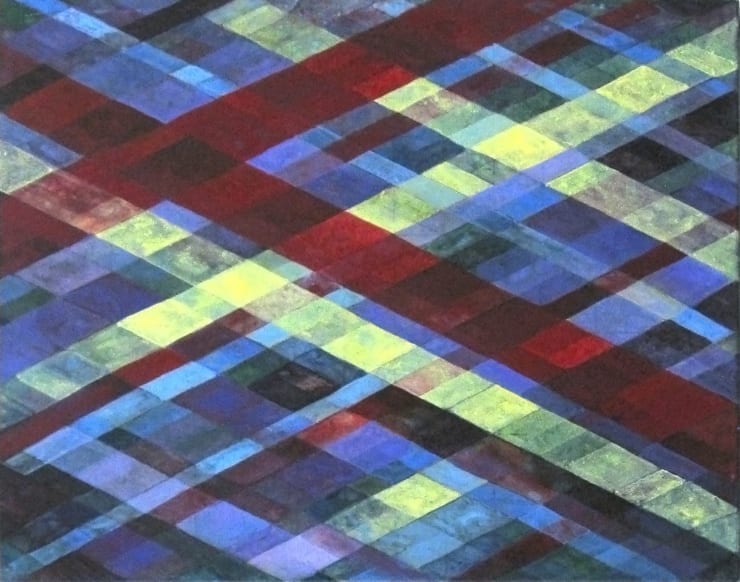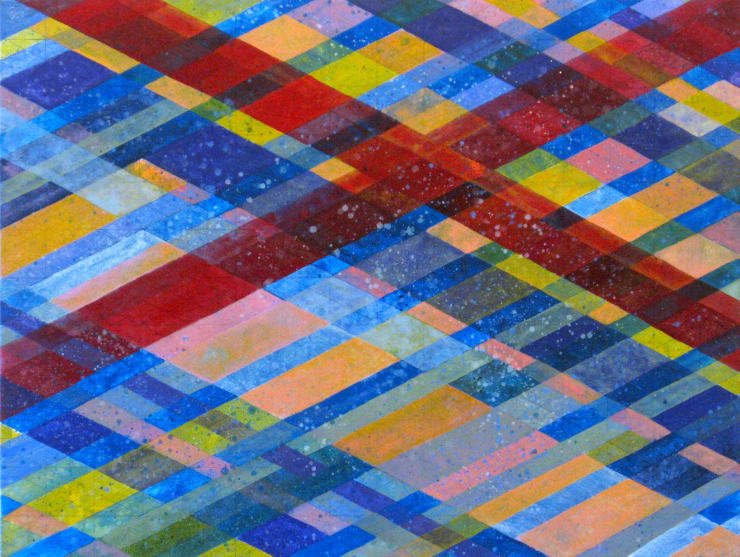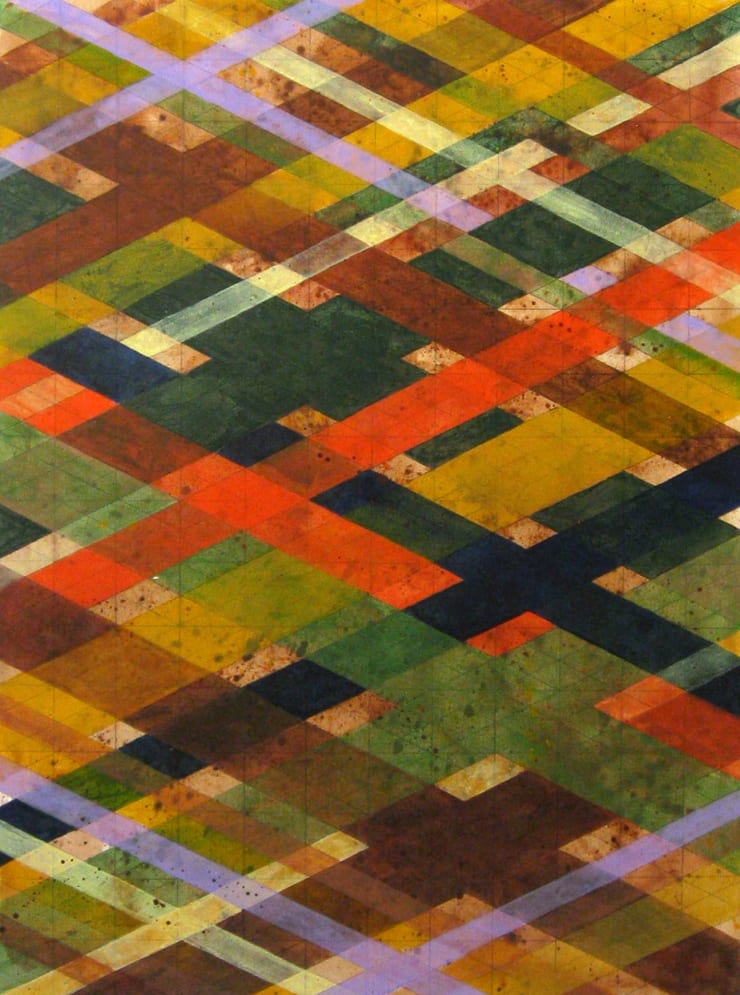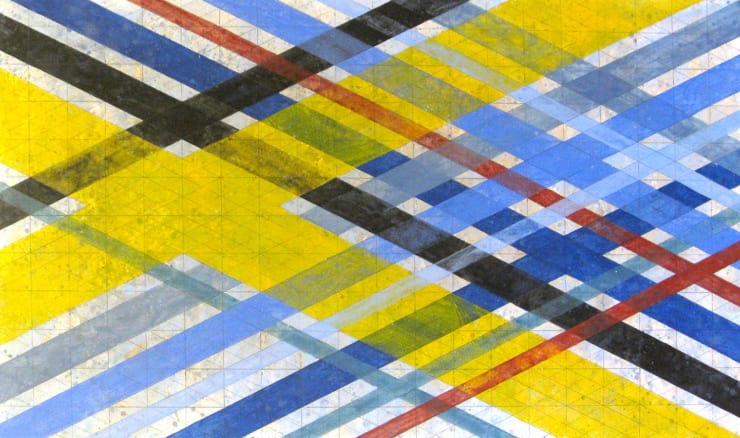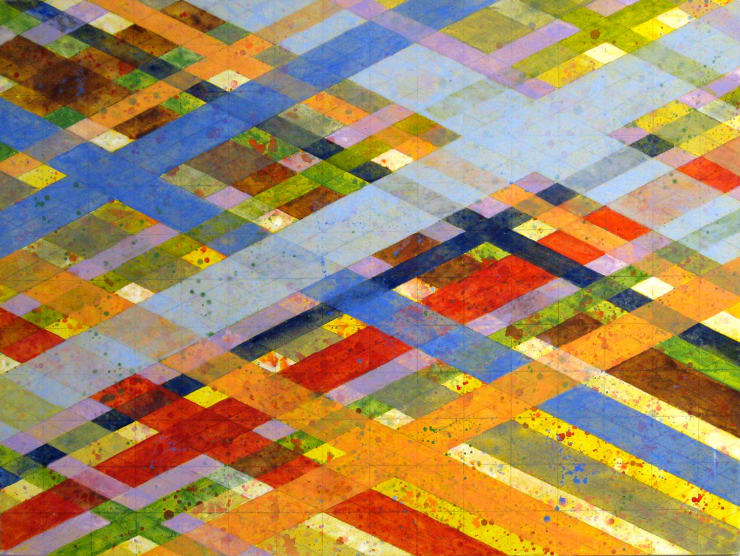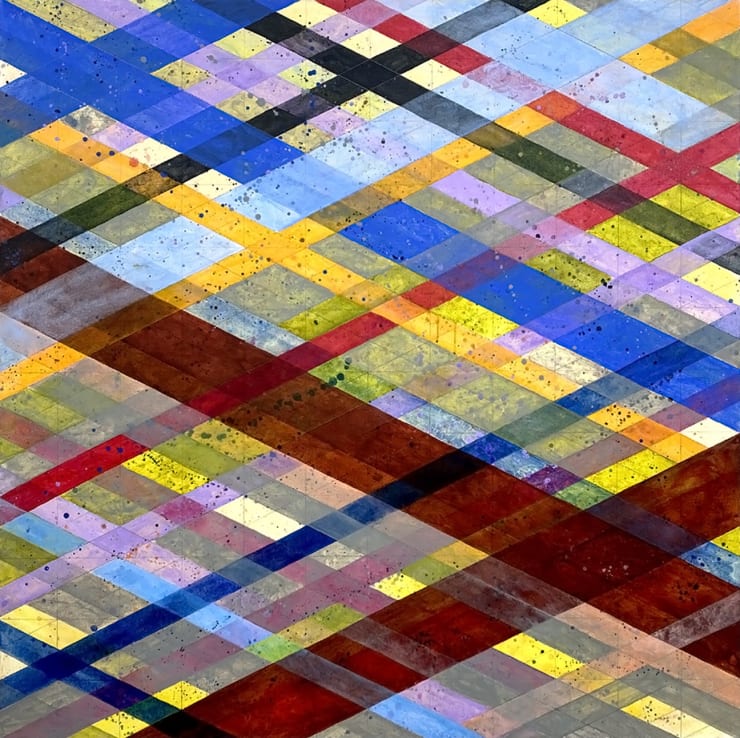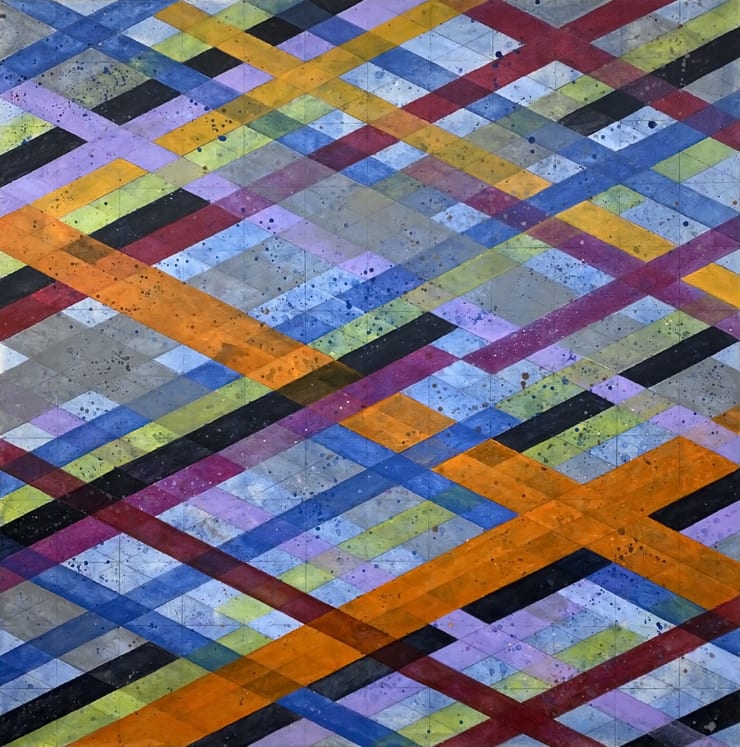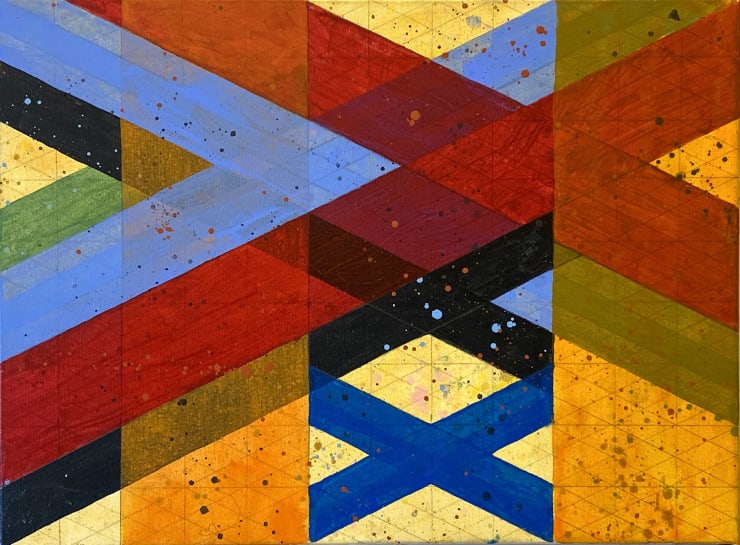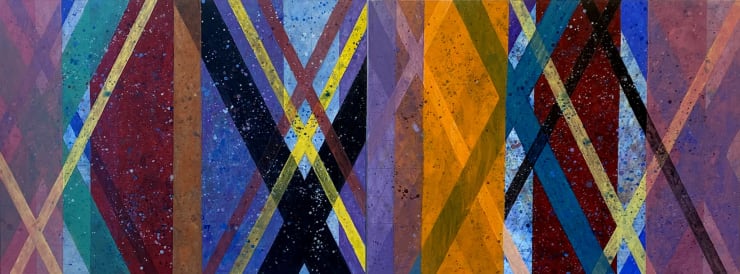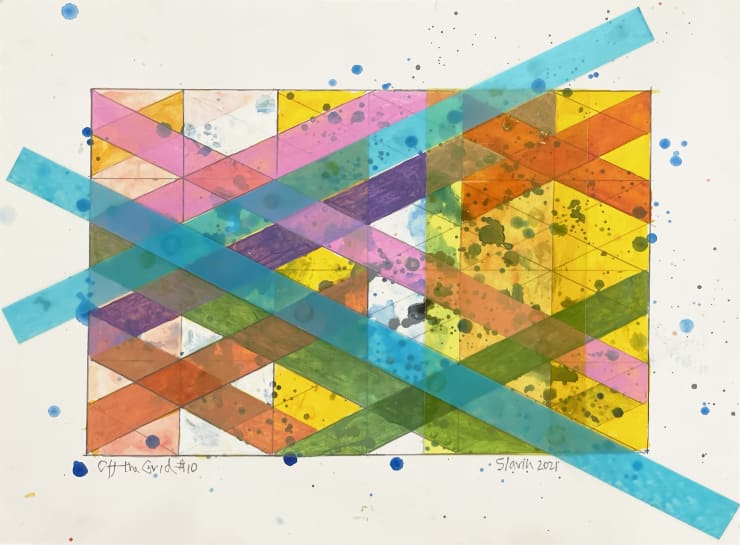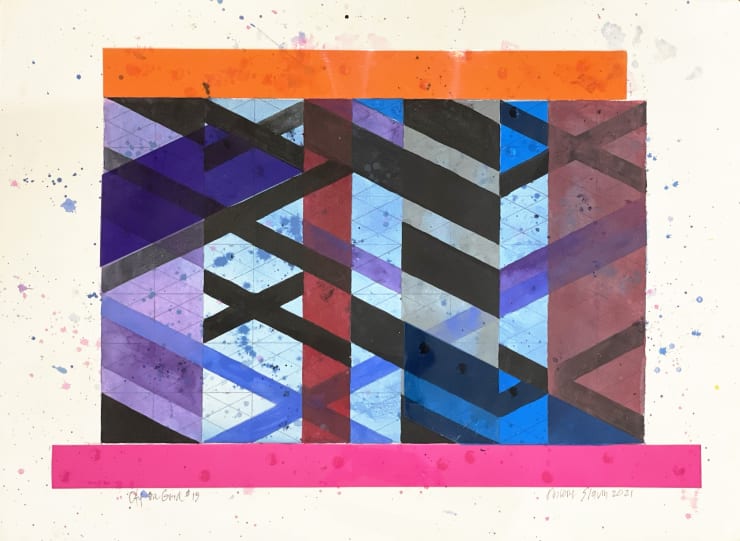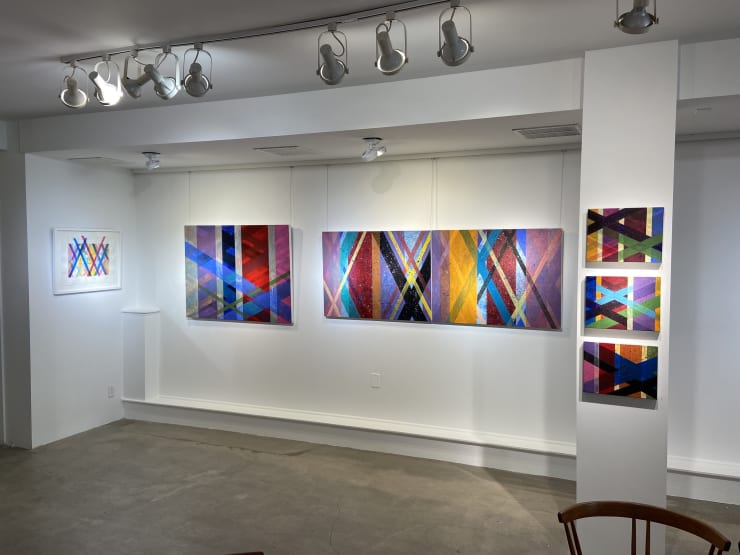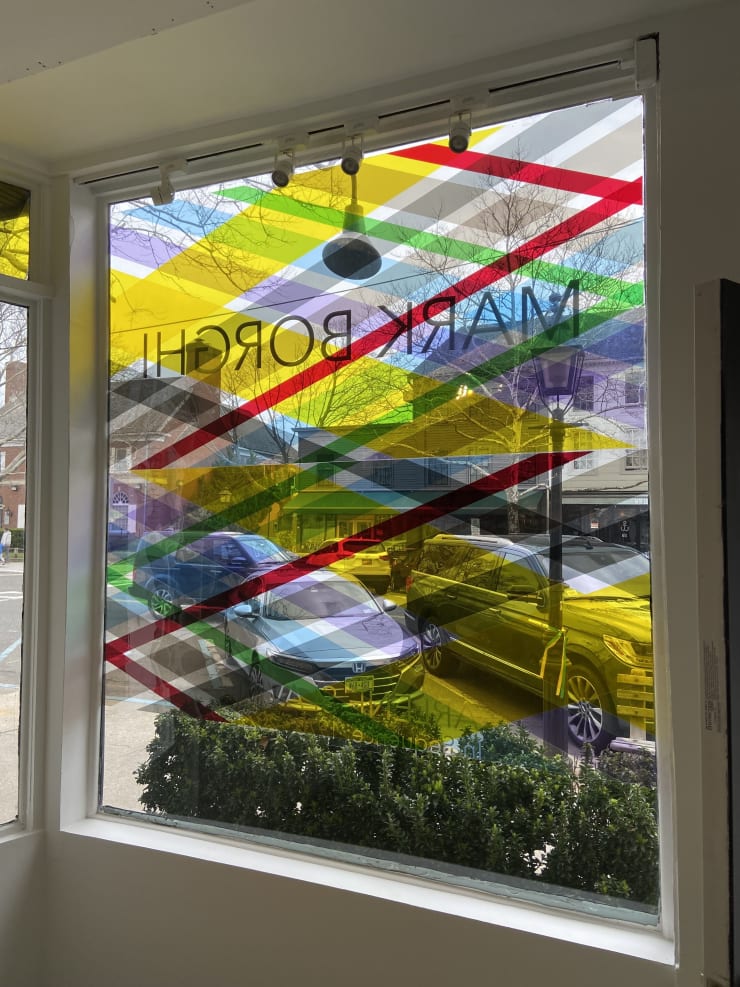Arlene Slavin: In Sequence 1970 – 2022
“The early grid work, which was well-received, came out of the geometry of Frank Stella and Kenneth Noland in those years, but I’ve always used thin paint, overlays and issues of transparency. That work was very engaging to me, very obsessive and influenced by minimalism as well.
Mark Borghi explores Arlene Slavin’s vibrant diagonal gridwork encompassing 50 years of work at its Sag Harbor location: 34 Main Street. Dividing her time between New York City and Wainscott Long Island, Slavin is a painter, sculptor and printmaker, who also created large-scale public art commissions. She is best known for her use of brilliant colors and unique handling of transparency in paint. Her practice is aligned with the Pattern and Decoration movement and she participated in several of the seminal exhibitions. Recently, she’s exhibited at the Museum of Contemporary Art, Los Angeles, California in With Pleasure: Pattern and Decoration in American Art, 1972-1985, which traveled to Bard College this past spring. Slavin has had 25 solo exhibitions and over 80 group shows.
In the 1970s Slavin developed her signature pencil grid system which served as the base for her geometric abstractions. Using layers of overlapping shimmering color woven into her grid, she painted many large-scale works. Slavin’s influences are in non-western art including Japanese folding screens and woodblocks, Indian miniatures, Islamic tile work and Byzantine mosaics.
“The early grid work, which was well-received, came out of the geometry of Frank Stella and Kenneth Noland in those years, but I’ve always used thin paint, overlays and issues of transparency,” said Ms. Slavin. “That work was very engaging to me, very obsessive and influenced by minimalism as well. The first grid was very big, and I kept making it smaller and smaller and more complex. Later in the 1970s, I saw the little triangles in the paintings as little flying things, like birds.”
While teaching for two summers at renowned Skowhegan Art School in rural Maine Slavin started to engage with the natural landscape for the first time in her artist practice. She slowly moved away from the grid, but continued to work with flat space, exemplified in Indian and Japanese miniatures, drawing and painting birds, fish and animals.
In the 1980s, Slavin segued to public and private art commissions, inspired by nature, combined with symbols and patterns. Working in a wide range of sculptural material, including metals, etched glass, concrete and terrazzo, her forms wove an interplay of silhouettes and shadows. Her work consists of sculpture, ornamental fences, gates, floor inlays, room dividers, etched glass and folding screens.
In 2010 the artist’s return to the grid was a deliberate decision. “I thought, well, 40 years later let’s see how I can use that grid. The earlier ones were more segmented. The new paintings have more continuous linear crossing over. The space is vertical, but it also looks like they were painted from above. The newer paintings are much looser and more transparent than the ones from the 1970s.” An artist who came of age during the rise of feminism, Slavin’s work with their jewel like colors and unabashedly glorious surfaces continue to look fresh and exciting.
Her work has been exhibited in the Whitney Museum Biennial and many other museums and galleries throughout the country since the 1970s. She is included in numerous corporate and public collections including the Metropolitan Museum of Art, Fogg Art Museum, Brooklyn Museum of Art, Cincinnati Art Museum, and Guild Hall Museum in East Hampton. Slavin earned a BFA from Cooper Union and an MFA from Pratt Institute. Ms. Slavin began coming to the South Fork in the 1970s. She and her husband Eric Bregman built their house in Wainscott in 1989. She maintains a studio in Gramercy Park as well in Wainscott.
-
 Arlene Slavin, Beige, 1973
Arlene Slavin, Beige, 1973 -
 Arlene Slavin, Red, 1973
Arlene Slavin, Red, 1973 -
 Arlene Slavin, Sunset Shadows, 1973
Arlene Slavin, Sunset Shadows, 1973 -
 Arlene Slavin, Garden Spring, 1973
Arlene Slavin, Garden Spring, 1973 -
 Arlene Slavin, Kaisho, 1974
Arlene Slavin, Kaisho, 1974 -
 Arlene Slavin, Murasaki, 1973
Arlene Slavin, Murasaki, 1973 -
 Arlene Slavin, Intersections G3, 2010
Arlene Slavin, Intersections G3, 2010 -
 Arlene Slavin, Intersections G5, 2010
Arlene Slavin, Intersections G5, 2010 -
 Arlene Slavin, Intersections G6, 2010
Arlene Slavin, Intersections G6, 2010 -
 Arlene Slavin, Intersections G7, 2010
Arlene Slavin, Intersections G7, 2010 -
 Arlene Slavin, Intersections G9, 2010
Arlene Slavin, Intersections G9, 2010 -
 Arlene Slavin, Intersections G10, 2010
Arlene Slavin, Intersections G10, 2010 -
 Arlene Slavin, Intersections G20, 2010
Arlene Slavin, Intersections G20, 2010 -
 Arlene Slavin, Intersections G24, 2012
Arlene Slavin, Intersections G24, 2012 -
 Arlene Slavin, Intersections G26, 2012
Arlene Slavin, Intersections G26, 2012 -
 Arlene Slavin, Intersections G40, 2017
Arlene Slavin, Intersections G40, 2017 -
 Arlene Slavin, Intersections G41, 2017
Arlene Slavin, Intersections G41, 2017 -
 Arlene Slavin, Intersections G42, 2014
Arlene Slavin, Intersections G42, 2014 -
 Arlene Slavin, Intersections G43, 2014
Arlene Slavin, Intersections G43, 2014 -
 Arlene Slavin, Intersections Portal #1, 2021
Arlene Slavin, Intersections Portal #1, 2021 -
 Arlene Slavin, Intersections Portal #2, 2021
Arlene Slavin, Intersections Portal #2, 2021 -
 Arlene Slavin, Intersections Portal #5, 2020
Arlene Slavin, Intersections Portal #5, 2020 -
 Arlene Slavin, Intersections Portal #6, 2020
Arlene Slavin, Intersections Portal #6, 2020 -
 Arlene Slavin, Intersections Portal #8, 2020
Arlene Slavin, Intersections Portal #8, 2020 -
 Arlene Slavin, Intersections Portal #9, 2021
Arlene Slavin, Intersections Portal #9, 2021 -
 Arlene Slavin, Intersections Portal #10, 2021
Arlene Slavin, Intersections Portal #10, 2021 -
 Arlene Slavin, Intersections Portal #11, 2021
Arlene Slavin, Intersections Portal #11, 2021 -
 Arlene Slavin, Intersections Portal #15, 2021
Arlene Slavin, Intersections Portal #15, 2021 -
 Arlene Slavin, Intersections Portal #16, 2021
Arlene Slavin, Intersections Portal #16, 2021 -
 Arlene Slavin, Intersections Portal #17, 2022
Arlene Slavin, Intersections Portal #17, 2022 -
 Arlene Slavin, Intersections Portal #18, 2022
Arlene Slavin, Intersections Portal #18, 2022 -
 Arlene Slavin, Intersections Portal Diptych, 2022
Arlene Slavin, Intersections Portal Diptych, 2022 -
 Arlene Slavin, Off the Grid #7, 2021
Arlene Slavin, Off the Grid #7, 2021 -
 Arlene Slavin, Off the Grid #9, 2021
Arlene Slavin, Off the Grid #9, 2021 -
 Arlene Slavin, Off the Grid #10, 2021
Arlene Slavin, Off the Grid #10, 2021 -
 Arlene Slavin, Off the Grid #13, 2021
Arlene Slavin, Off the Grid #13, 2021 -
 Arlene Slavin, Off the Grid #15, 2021
Arlene Slavin, Off the Grid #15, 2021 -
 Arlene Slavin, Off the Grid #16, 2020
Arlene Slavin, Off the Grid #16, 2020 -
 Arlene Slavin, Off the Grid #17, 2020
Arlene Slavin, Off the Grid #17, 2020 -
 Arlene Slavin, Off the Grid # 18, 2020
Arlene Slavin, Off the Grid # 18, 2020 -
 Arlene Slavin, Off the Grid #19, 2021
Arlene Slavin, Off the Grid #19, 2021
